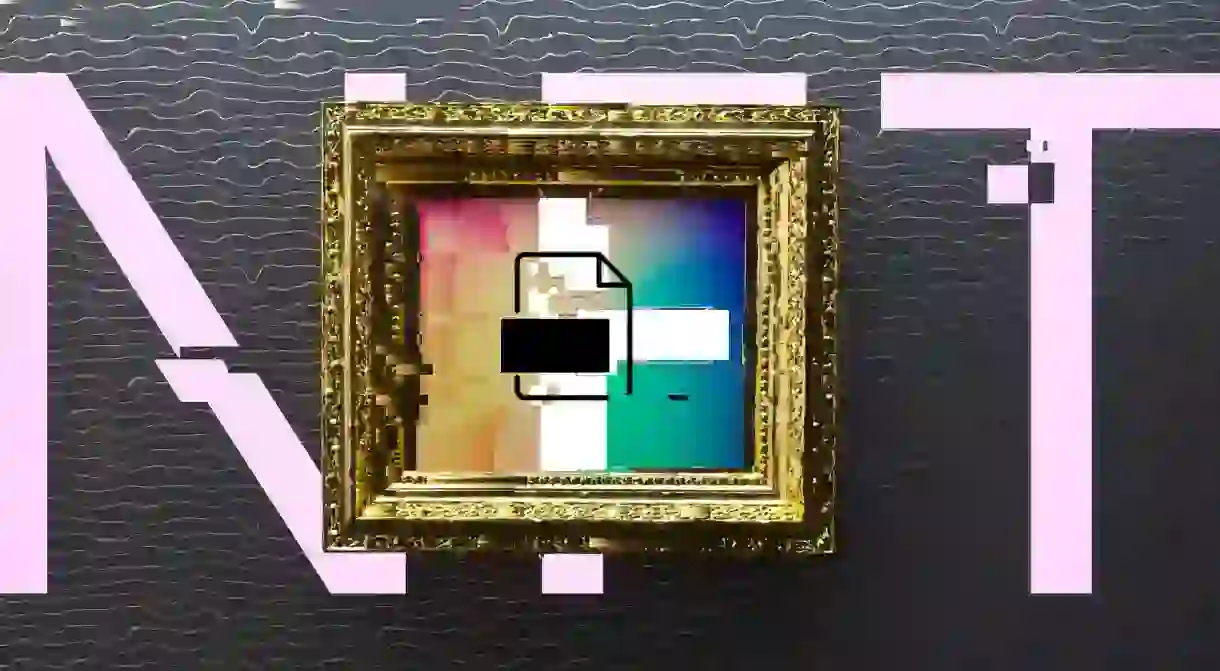How NFTs Are Transforming the Art World

Non-fungible tokens, or NFTs, are changing the way artists and galleries market and authenticate original pieces of art. With a digital stamp verifying the uniqueness of each piece, it’s easier for creators to be rewarded, and customers to be assured they are buying the real thing. Two successful Czech artists are now selling their work on the OpenSea platform. So what does it mean for the way they work?
Jan Kaláb, 42, began as a graffiti artist in his native Prague, his work appearing on the sides of buildings under his tags Cakes or Point. The Cakes tag (from the Czech word for “splash”) gives a clue to the visual impact. He describes seeing the first street murals in his city in the early 90s, saying: “Bam! Shapes and colours on a boring wall. A message I don’t understand. From the first moment I saw graffiti on the wall, I knew I wanted to discover what this was. I needed to be part of it.” A signature of his style is huge circles of glowing colour, sometimes suggesting planets or eyeballs, spheres or voids. “The circle,” says Kaláb, “is the most complex shape.”

Meanwhile, Jakub Nepras, 40, draws on a rich tradition in Czech visual art – the meeting of art, photography and film. Nepras’s work blends physical structures – often semi-abstract plexiglass sculptures – and video projections, to make what the artist calls “video paintings”. The result is a sometimes disorienting but quite beautiful union of the organic and the high-tech, in works such as Tree, Trip and Fossil.
Nepras says he had no idea when he started creating digital images 20 years ago that such a “new, transient medium” would have lasting value. But how does the artist ensure they get the rewards for that? The advantage of issuing a piece as an NFT means he doesn’t have to be afraid “to release them into the world in full quality”. It also means a bigger audience can see them, without compromising their authenticity. And if somebody wants to own them “in the form of a token”, Nepras can still guarantee their value.

Meanwhile Kaláb admits that this is all so new, he is unsure how it will pan out. While his art may be more concrete (and less easy to simply copy) than Nepras’s video installations, nothing is certain about values in the art world. A piece may be bought in one currency (Czech Koruna in Kaláb’s case) and held in another (Bitcoin). Throw in speculation in both the art market and on cryptocurrencies themselves, and prices become hard to predict. For Kaláb, issuing NFTs as certificates of authenticity alongside the artwork itself is the exciting part. These could actually be “more secure than paper contracts”, as they will accompany the artwork for its lifespan, and be instantly accessible to check online from anywhere on the planet. Nepras calls NFT certification “a big step forward in the world of digital art”.
But will NFTs let artists grow their individual markets and increase values? Kaláb, who recently sold his first NFT artwork for 1m Czech koruna (c£33,000) emphasises that it’s “early days” in a very immature market. Nepras adds that, however pieces are authenticated, the value will always come back to “the content, the story, and the quality of work”.

As for getting to new audiences and customers, Kaláb is excited about “new ways of meeting the public” – a public that won’t necessarily be able to visit Prague to see his murals bedecking buildings, or visit his exhibitions in Florida, Bologna or London. But for both artists, the physical remains a crucial partner to the digital. Kaláb says: “Galleries are still really important. Nobody says otherwise.” Walk around the perception-bending hanging sculpture of My Cosmos in the Puteaux City Hall, Paris, and you see his point, as you are reminded of the joy of experiencing art in three dimensions. As Nepras says: “Humans are originally earthy creatures. We will always look for physical artefacts.” He is exploring art where “a purely digital illusion is associated with something physical”.
And NFTs can help artists get their work out there, without risk. Kaláb sees big possibilities in the use of NFTs to authenticate limited editions. The history of numbered print runs of 100 or 1,000 copies goes back as far as Goya and Rembrandt. For centuries they have let in-demand artists “diffuse” their work to a bigger audience, while still maintaining authenticity. NFTs promise to be the next generation of that process, with authenticity quicker and easier to check… and no risk of forgeries.
Culture Trip is launching an NFT Collection, The Art of Travel, at opensea.io/collection/culture-trip to offer artists an opportunity to showcase and sell their digital art to people around the world.













